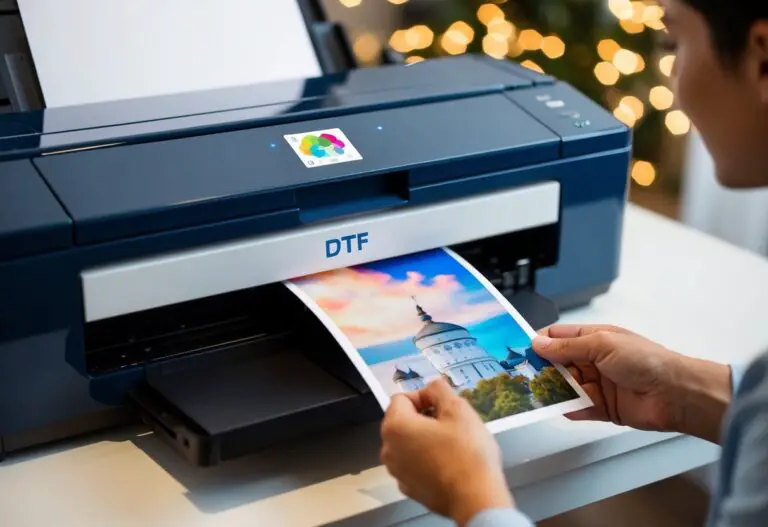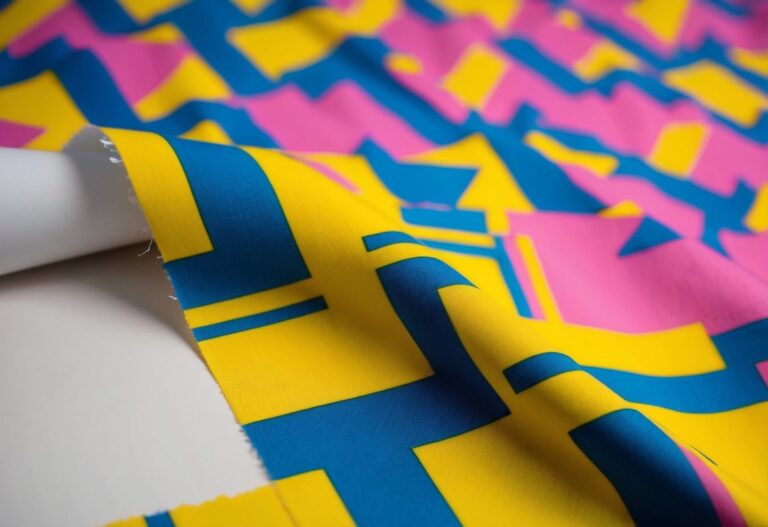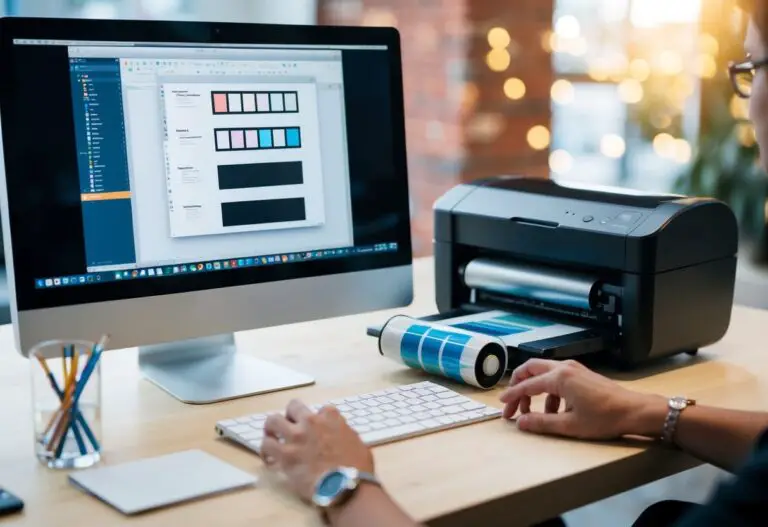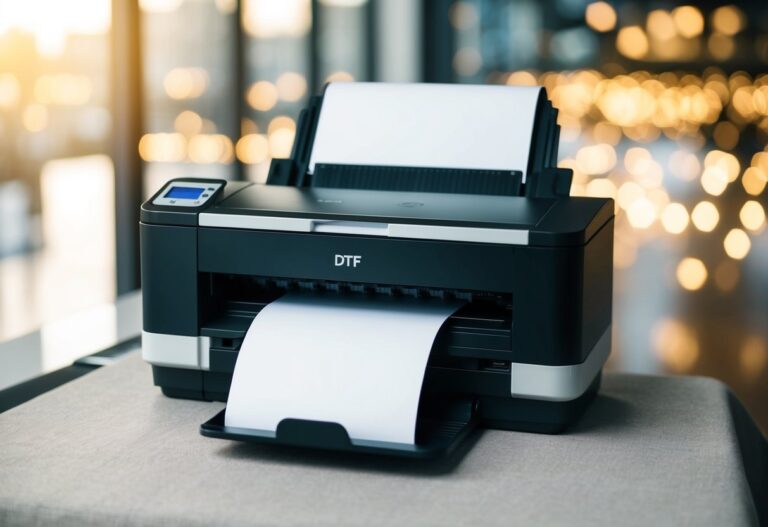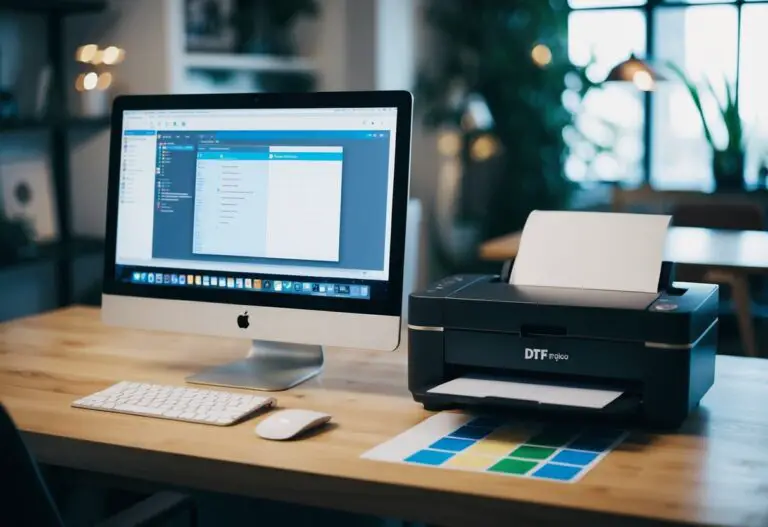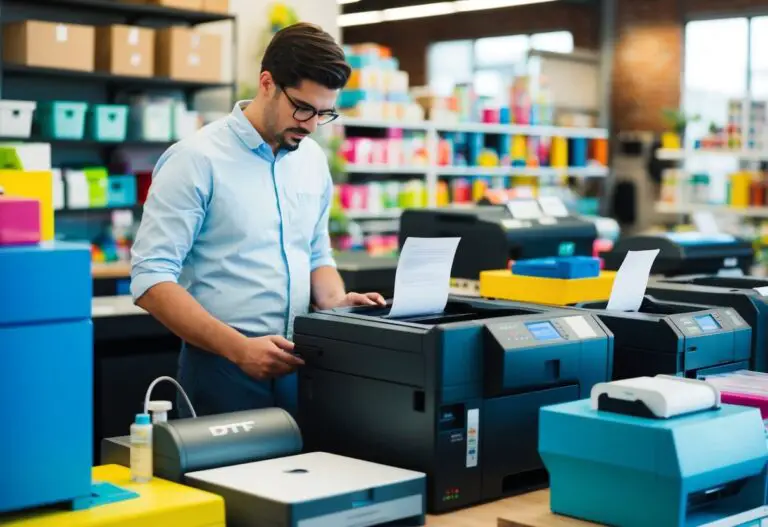Wondering if you can use your trusty inkjet printer for DTF printing? You’re not alone. Many small business owners and print shop operators are curious about this cost-effective option. DTF (Direct to Film) printing with an inkjet printer is possible, but it requires some modifications and specific supplies.
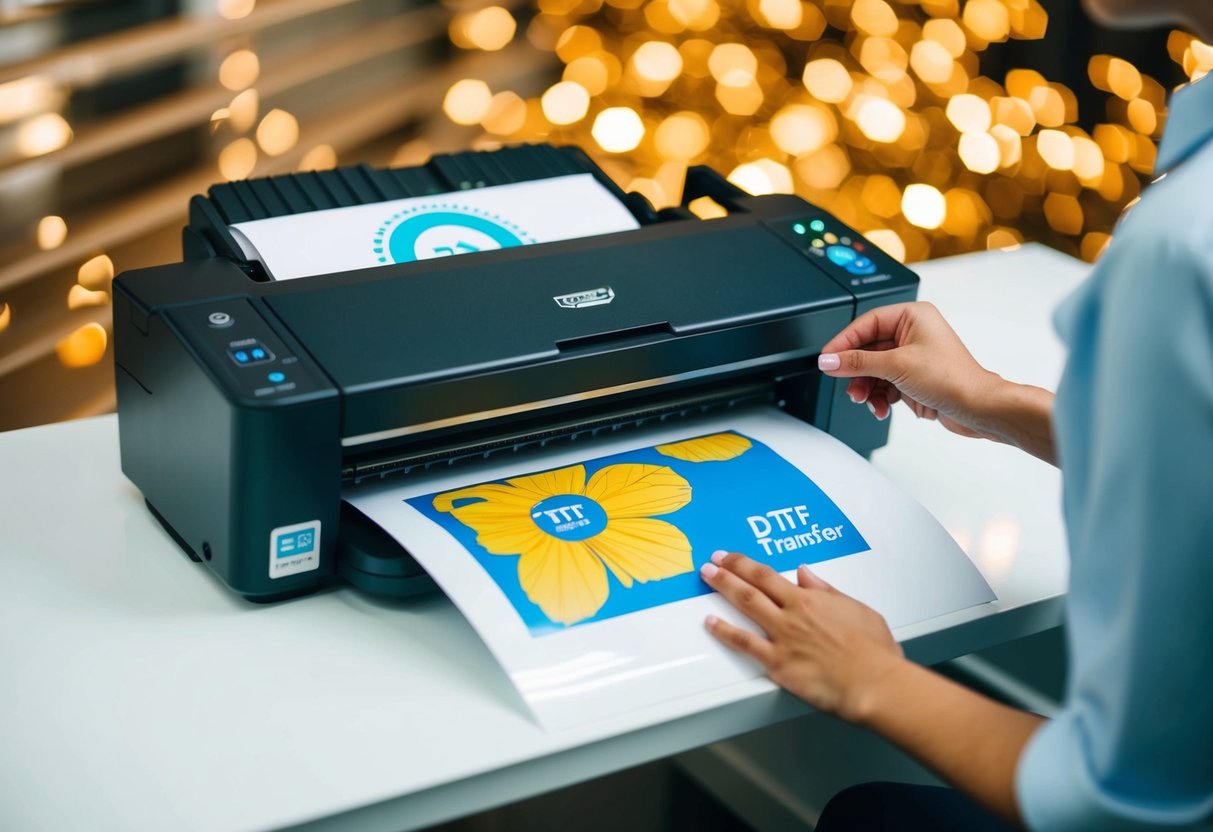
Regular inkjet printers aren’t designed for DTF out of the box. You’ll need special DTF ink, film, and powder. The process involves printing your design on a special film, applying powder, and then heat pressing it onto fabric. While it might seem complex, many print shops have successfully adapted inkjet printers for DTF.
Using a modified inkjet printer for DTF can be a budget-friendly way to start offering custom garment prints. It’s great for small businesses looking to expand their services without a big upfront investment. Keep in mind that results may vary, and dedicated DTF printers often produce higher quality prints.
Key Takeaways
- Inkjet printers can be modified for DTF printing with special ink, film, and powder
- Modified inkjet DTF printing is a cost-effective option for small businesses and print shops
- Dedicated DTF printers generally produce better results than modified inkjet printers
Can Inkjet Printers Be Used For DTF
You can use inkjet printers for DTF (direct-to-film) printing, but it’s not as simple as using a regular printer. DTF printing needs special ink and film.
To make it work, you’ll need to modify your inkjet printer. This means changing some parts and settings. The printer must be able to handle DTF ink and film.
Here’s what you need to do:
• Use DTF ink instead of regular ink
• Replace the paper tray with one that can hold DTF film
• Adjust printer settings for the right ink flow
Keep in mind that not all inkjet printers can be changed for DTF. Some work better than others. Look for printers that are easier to modify.
DTF printing lets you make designs on cotton, polyester, and other fabrics. It’s great for custom apparel. The process goes like this:
- Print your design on special DTF film
- Add DTF powder to the print
- Heat press the design onto fabric
Using an inkjet printer for DTF can be tricky. You might face some problems:
- Clogged print heads from thick DTF ink
- Trouble feeding the DTF film through the printer
- Prints that don’t last as long as those from dedicated DTF printers
If you’re just starting out, using a modified inkjet printer can be a good way to try DTF printing. But for big jobs, you might want a printer made just for DTF.
Modifications Needed For DTF Printing With Inkjet Printers
To use an inkjet printer for DTF printing, you’ll need to make some key changes. First, you’ll have to switch to special DTF inks. These include white ink and DTF-specific CMYK inks.
Next, you’ll need to adapt how you feed the film into the printer. You can do this manually or by adding a custom film feeding system. This ensures the DTF transfer film moves through smoothly.
You’ll also need to install RIP software. This helps manage colors and control the white ink. It’s crucial for getting good results with DTF prints.
Some other helpful changes include:
- Adding a bulk ink system
- Using pigment-based inks
- Installing a drying system
A conversion kit can make these changes easier. It often includes the parts and instructions you need.
Remember, not all inkjet printers work well for DTF. Look for one that’s compatible with DTF inks and can print at high resolution. This will give you the best chance of success with your DTF printing setup.
Pros Of Using Modified Inkjet Printers For DTF
Modified inkjet printers offer several advantages for DTF printing. You can save money compared to buying dedicated DTF printers. A modified inkjet setup costs $500-$1,500, while entry-level DTF printers run $3,000-$5,000.
These printers work well for small businesses. You can start with lower volumes and scale up as needed. This flexibility lets you test the market without a huge upfront investment.
Print quality is often excellent with modified inkjets. Many can produce vibrant colors and sharp details. High-end models offer resolutions up to 5760 x 1440 dpi for crisp, professional results.
Maintenance is generally simpler on modified inkjets. Parts are widely available and affordable. You can often do repairs yourself, saving on service costs.
Ink adhesion is good with the right DTF inks and films. Your prints will be durable and long-lasting on various fabrics and materials.
The advanced tech in some inkjet models allows for precise droplet control. This gives you better color accuracy and smoother gradients in your designs.
Cons And Limitations Of Inkjet DTF Printing
Using an inkjet printer for DTF printing has some drawbacks. Print speed is slower compared to dedicated DTF printers. You might only produce 2-4 sheets per hour with an inkjet setup.
Results can be inconsistent with inkjet DTF printing. The quality may vary between prints, which can be frustrating when trying to create professional-looking designs.
Consumer-grade inkjet printers aren’t built for heavy DTF use. They may break down faster under the strain of frequent DTF printing jobs.
Maintenance can be tricky. Inkjet printers need regular cleaning and calibration to keep working well for DTF prints. This takes time and effort.
The wash durability of inkjet DTF prints may not match that of specialized DTF printers. Your designs might fade or peel sooner after repeated washes.
Inkjet DTF setups often need more manual work. You’ll have to apply powder and heat press the transfers yourself, which can be time-consuming.
Cost is another factor to think about. While the initial investment is lower, you may spend more on ink and materials in the long run compared to a dedicated DTF system.
Recommended Inkjet Printers For DTF Conversion
Many inkjet printers can be converted for DTF (direct-to-film) printing. Here are some top options to consider:
Epson EcoTank Series
The ET-15000 and ET-8550 models are great choices. They have refillable ink tanks that save you money over time. You’ll get high-quality prints without frequent cartridge changes.
Canon PIXMA Pro Series
Look at the PRO-200 and PRO-300 printers. These produce sharp, detailed designs perfect for DTF transfers. The print quality is top-notch for intricate graphics.
Epson SureColor P-Series
The P800 model stands out for DTF conversion. It offers:
- Wide-format printing (up to 17 inches)
- Excellent color accuracy
- Durable pigment inks
Other Options
• Some Brother inkjet printers work well for DTF
• HP DesignJet models can be adapted for larger prints
• Roland TrueVIS printers are popular for commercial use
When choosing a printer, think about:
- Print size needs
- Budget for ink and supplies
- How often you’ll use it
Pick a printer that fits your specific DTF printing goals. With the right setup, you can create amazing transfers at home or for your business.
DTF Printing Process With Modified Inkjet Printers
DTF printing lets you make custom transfers using a modified inkjet printer. You start by making your design on the computer. Then you send it to special software that gets it ready for printing.
Next, you print the design on DTF film using your modified inkjet printer. This clear film holds the ink well. After printing, you add DTF powder to the wet ink. This powder helps the design stick to fabric later.
You then cure the powder with heat. This makes it melt and bond with the ink. Now your transfer is ready to put on a shirt or other item.
To apply the transfer, you place it on the fabric. Using a heat press, you press it with heat and pressure. This makes the design stick to the fabric permanently.
The whole process takes some practice. But once you get the hang of it, you can make cool custom shirts and other items. DTF transfers work on many types of fabric and give bright, long-lasting results.
Comparison: Modified Inkjet Vs. Dedicated DTF Printers
Modified inkjet printers offer a budget-friendly entry into DTF printing. You can convert an existing inkjet printer to handle DTF inks and films. This lets you try DTF without a big upfront cost.
Dedicated DTF printers are made for the job. They give better print quality and faster production speeds. The colors are brighter and last longer on garments.
Inkjet conversions need regular maintenance. You may face clogged print heads or ink flow issues. Dedicated DTF printers are more reliable and need less upkeep.
For small businesses, a modified inkjet can work well. It’s good for low volumes and testing the waters. As you grow, a dedicated DTF printer becomes more cost-effective.
Dedicated machines handle different fabric types better. They work well on cotton, polyester, and blends. Modified inkjets may struggle with some materials.
• Modified inkjets: Lower upfront cost, good for beginners
• Dedicated DTF: Higher quality, faster, more reliable
Both options let you create detailed designs that screen printing can’t match. DTF also beats traditional DTG for dark garment printing and transfer durability.
Frequently Asked Questions
Using an inkjet printer for DTF printing raises some common questions. Let’s look at key points about ink compatibility, printer models, and required materials.
What are the compatibility considerations for DTF inks with standard inkjet printers?
Standard inkjet printers aren’t made for DTF inks. DTF needs special inks that stick to the film and transfer well. Regular printer inks won’t work right on DTF film. You’ll need to use inks made just for DTF printing.
Can any model of Epson inkjet printers be used for DTF applications?
Not all Epson printers work for DTF. Some wide-format Epson models can be changed for DTF use. The Epson SureColor P-Series printers are often picked for DTF. You’ll need to check if your exact Epson model can handle DTF printing.
What materials do I need in addition to an inkjet printer to begin printing DTF transfers?
You’ll need more than just a printer for DTF. Get DTF transfer film made for inkjet printers. Buy DTF inks and powder. A heat press helps finish the transfers. Make sure you have the right paper to print test designs too.
